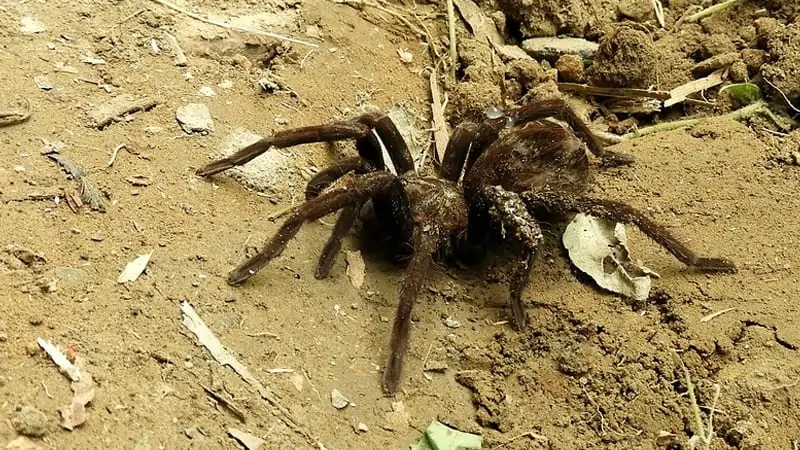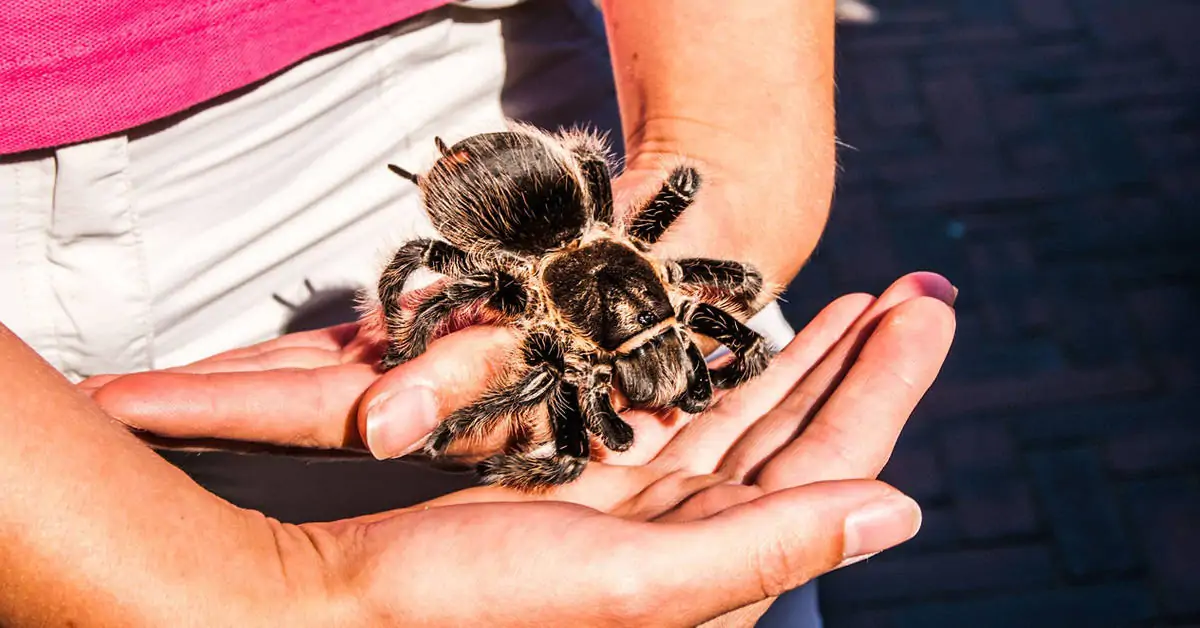Tarantulas are an interesting pet choice but can be very satisfying as a companion. Their range of colors and relatively simplicity to look after combined with their long lifespan of 20 years are great features, but can you travel with your tarantula?
You can travel with your tarantula but unless necessary it should probably be avoided. Traveling can be stressful for tarantulas and due to their esoteric needs it is probably better to leave them with friends or family.
We’ll look at some reasons why tarantulas don’t like to travel and also some tips on how to reduce stress for your tarantula. We’ll consider some ways you can safely transport your tarantula if it is necessary so that your furry friend makes it through the journey unscathed.
Is Travelling Stressful for Tarantulas?

Tarantulas have a hard time when being transported, as it is a constant battle to try to maintain internal equilibrium or orientation given the movement of the tarantula carrier as it travels in a vehicle.
Sometimes referred to as shipping shock, it’s well known among tarantula enthusiasts that you must put your newly-arrived tarantula in a cool, dark place to let it recover from the experience.
It’s best if you can also put aside an enclosed area that your tarantula can go and hide in, with some water but no feeding. Tarantulas will fast for long periods with no problems, and feeding just complicates their relaxation process.
Signs Your Tarantula Is Stressed
There are some common signs your tarantula is stressed. If you notice them taking up a threatening or attack pose or alternatively hiding behind its legs, this is a sign of the fight or flight response.
Activity levels for a tarantula will be consistent, so if you notice spikes of high activity such as excessive climbing, this is also a sign of stress causing listlessness and pacing. This should be a particularly clear sign if you own a terrestrial tarantula such as the Chaco Golden Knee.
Burrowing species most commonly live in a vertically-oriented burrow, whereas the other common type that come under the arboreal species umbrella will live in trees.
Some tarantulas will use their legs to touch their setae, one of their primary defensive characteristics sometimes referred to as urticating hairs. As they touch their setae, it causes the defensive barbs to fall out and so they will develop a bald spot there.
This is common behavior especially when they are either attacking enemies or stressed.
Keep in mind that these small needles are irritants, especially if they get into your eye or nose. The combination of your spider shedding these hairs from the stresses of travel, further making your own travels more difficult, is something you want to avoid.
Can You Travel With Your Tarantula?

Traveling with a tarantula is possible but requires some planning ahead. Tarantulas are an exotic pet and may therefore be subjected to restrictions when they cross another country’s borders.
Research ahead of time to find out where you can and can’t take your tarantulas. Have documentation to prove where you got them from, whether they were bred in captivity and any other official ownership information you can get your hands on.
It may even be necessary to register your ownership with various organizations when crossing into different jurisdictions
While some accomodation may refuse you, if you can get on the phone and explain the situation to a manager it is normally possible to stay almost anywhere. If a location accepts cats or dogs, it is much easier to deal with tarantulas as they won’t be roaming or shedding.
One option is to look into specialist pet travel companies that deal with these types of requests often.
How Do You Transport a Tarantula?

Tarantulas don’t like direct sunlight but they do depend on the day/night cycle to get their body clocks in order. Companies that ship spiders won’t do so when the temperature is outside the range of 40ºF – 95ºF.
Sealed containers that allow some light in but also provide plenty of hiding space are ideal. Too much heat is just going to stress a tarantula out, so ensure there is a low to medium amount of airflow.
When transporting your spider, it’s best to put them in a separate container from their home as the presence of any unsecured object in the enclosure can move around and hurt them.
Tarantulas are very delicate, so care should be taken that no blunt force trauma can happen to them. If a tarantula takes even small amounts of force or pressure to its body, this can lead to permanent injury or death.
Use a container that is just big enough for the tarantula to stretch out fully, but not enough so that it can rattle around inside and get hurt. You can use silk or dirt to provide a bit of padding in the container.
Tarantulas tend to get agitated after feeding, so it is best to hold off feeding until you’ve arrived somewhere that you’ll be staying at for at least a few hours.
Getting a hold of tarantula food like crickets can be challenging but with the rise in e-commerce giants like Amazon you can get them shipped overseas with little hassle. Fluker’s Gourmet Canned Food is an example of some canned crickets.
Tarantulas can dry out quickly so it is important to keep their habitat moist. You can do this with a spray bottle and some water and spray the substrate of the enclosure.
Most tarantulas don’t like being handled, and are best left as display animals. This means that you should also minimize your handling of your tarantula during high stress situations such as traveling.

